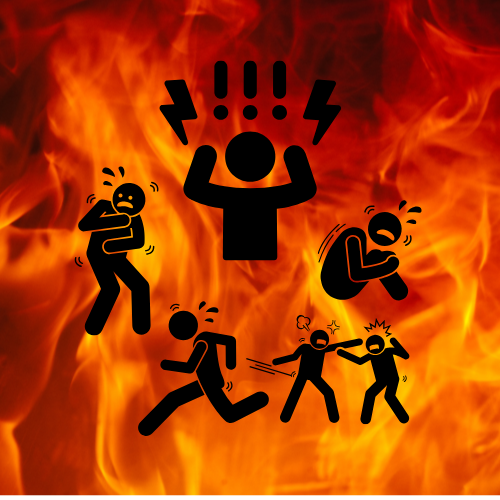But, My Pain is Real
Yes, your pain is very real. Sometimes the pain that we feel does not seem to match the injury or illness that we, our doctors, or our loved ones can see. Often this makes people think that either “something must be seriously wrong” or “the pain must be all in my head” or “people just don’t get it”. Understanding pain science can help this make better sense.
Our nervous system sends messages back and forth from our brain to our body, and from our body to our brain. Along the way these messages can either get amplified or dampened, increasing or decreasing the volume of their message. The message may also get altered or changed. Think of the game of Telephone that we played as a kid. In this game the final message was often hysterically different than the one from the start. With pain, it is not so funny.
Pain is our Brain’s interpretation of the messages that it is receiving from the Body, not the actual message that was sent
When we experience and injury, like burning our hand on a hot stove, the nerves in our hand send out a signal that goes to our spinal cord. There a couple important things happen. First, there is a reflex that triggers an involuntary muscle contraction to pull our hand away. This happens even before the message gets to our brain to tell us that our hand is injured. This is a helpful survival mechanism that allows us to respond to danger much quicker than our brain can respond.
The second thing that happens is the nerves in the spinal cord send the message up to our brain. We have natural chemicals, called neurotransmitters that help send this message form one nerve to the next. Some neurotransmitters speed up that message and some slowdown that message. Glutamate is an excitatory neurotransmitter, it helps to intensify that message. GABA is an inhibitory transmitter, it dampens that message.
Glutamate and GABA act like a volume dial for our nerves. When they are in balance, the volume is just right for the situation. When out of balance, it can feel being at a rock concert when you are trying to sleep.
Once that message reaches the brain, the brain tries to interpret what this new message means. The signal that was sent carries basic information, like hot, sharp, searing. The brain then searches its files and compares this information to past experiences. What happened the last time I felt something like this sensation? In those files are stored all the details of past experiences, other sensations, emotions, our response and what it meant to us. Last time ...did we feel safe? or afraid? did we heal quickly? or did it cause worry, sadness and distress? Often times this digging through our old files is a fast, unconscious process, we don’t even know that it is happening.
How the brain responds is based on both the information found in these files and the CURRENT state of our body and mind. If we are healthy, well feed, rested and joyful, the brain is more likely to respond in a calm coordinated way, telling our body and mind what to do for a speedy recovery. If we are exhausted, depleted, and emotionally drained, the brain is likely to respond with a full blown RED ALERT response. PAIN! PAIN! PAIN! RUN! FIGHT!… or even FREEZE and HIDE.
This Fight, Flight, Freeze response could save your life, or it could cause a debilitating overreaction
When the response has just the right amount of urgency for the current situation, is well coordinated, and ends well, we file that information away for next time. Success! When things don’t go well, the response is too little or too much, or we have lingering distress after, our brain reorganizes our response system to be more sensitive. Our brain instructs our entire body to be on high alert for the next potential threat
In the example of touching the hot stove and burning our hand, the next time we see a stove our brain is already on alert and ready to respond. In some cases the brain will actually send messages to react way before there is any real threat. SEND MORE BLOOD!, get ready to RUN! HIDE! This response can cause real pain in the hand or somewhere else in the body.
Touching a hot stove is just one example. If the last time you felt discomfort in your belly, it turned out to be appendicitis or a bladder infection, every new sensation might feel like a potential threat. Over time our interpretation of sensations and our brain’s and body’s response can get a bit exaggerated or confused. It gets especially complicated when someone we love or an activity that we normally enjoy gets linked with sensations that cause pain and distress. This is what often happens when we have experienced abuse or neglect.
Luckily, there are things that we can do to help our brain and body respond in a more appropriate way. Distraction techniques can work for a very short period of time, getting our brain to focus on something other than potential threat. Mindfulness practices like meditation and yoga can have a much longer lasting effect. These practices help improve the messages between our body and brain, and bring us out of that high alert state. One of the most effective long lasting things that can do is to create new files in our nervous system of joy, pleasure, and safety. Aside from distraction, these techniques take time and practice. Having some guidance and support along the way can be very helpful.



